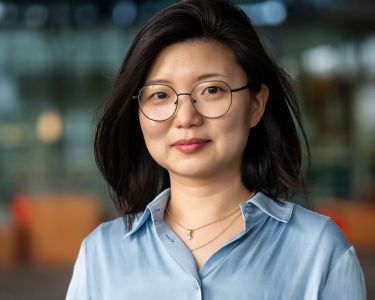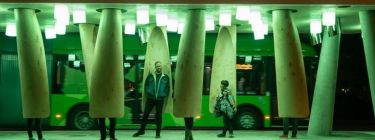
From the Station of Being to Societal Transformation – How design can drive a new European Renaissance
Ambra Trotto, PhD; Prof. Caroline Hummels; Jeroen Peeters, PhD; Daisy Yoo, PhD; Professor Pierre Lévy Eindhoven University of Technology, National Conservatory of Arts and Crafts
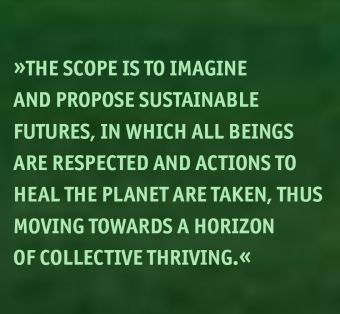
The design and how it came to be
The ‘Station of Being’ is a fully functional, experienceable prototype of a Smart Bus Station in the Northern Swedish city of Umeå that was opened in 2019. The project was initiated by the City of Umeå and partly funded by the H2020 Smart City Lighthouse project RUGGEDISED.
The aim of this design is to make public transport more attractive, to promote an increase in use and, in turn, to lower the carbon emissions of the city. The Station achieves this by affording a positive waiting experience, aiming to turn wai(s)ting time into time to feel, reflect, pause and move: in a nutshell, to be.
Two main components of the design contribute to the passenger’s experience.
– A dynamic light and soundscape informs passengers in or near the station which bus is about to arrive. A subtle play of lights refers to the arriving bus line through its colours, while a soundscape plays to tell stories about the character and history of the line’s final destination. This combination offers ambient information which can be perceived on one’s sensorial periphery, removing the need for passengers to pay constant attention to the coming and going of busses.
– Wooden ‘pods’ hanging from the ceiling provide a physically comfortable place for waiting passengers and contribute to a feeling of safety. The pods can be turned 360 degrees, providing a way to lean and stay out of the wind or just mindlessly sway. The pods allow one to seclude oneself, or to create a social space.
Picture above: Station of Being, Copyright by Samuel Pettersson
The design and development process for the Station of Being followed the Designing for Transforming Practices approach (Hummels, 2021, Trotto et al. 2021), which catalyses liveable ecosystems by transforming existing practices into truly sustainable ones through design. It does so by initiating and curating multidimensional synergies, driven by beauty, diversity and meaning. The scope is to imagine and propose sustainable futures, in which all beings are respected and actions to heal the planet are taken, thus moving towards a horizon of collective thriving. Those futures are populated by people living purposeful lives, in beautiful living spaces.
The design process of the bus station involved a large number and a wide range of stakeholders. The project was driven by the national Swedish research institute RISE in collaboration with a design and engineering consultancy, Rombout Frieling Lab. The project was owned by the Comprehensive Planning Department of the City of Umeå and the Streets and Parks Department acted as a client. The process further involved the Umeå Institute of Design at Umeå University, the public transport company Ultra, the local energy company, Umeå Energi, real estate developers, maintenance workers and engineering and building companies.
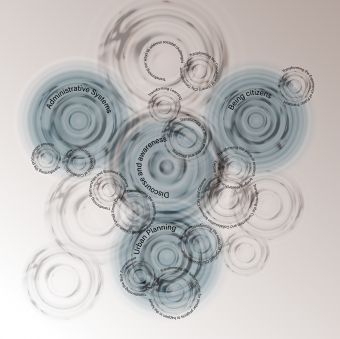
Elucidating transformations
Transformation is a substantial change, often associated with innovative and radical change. Transformation occurs when one configuration is converted or changed into another, whereby the change is major or complete (Mirriam Webster Dictionary). We use the term ‘transformation’ when designing for transforming practices (TP) to denote substantial enduring change of values, ethics, and related behaviours of a person, a community or society, triggered by the need of creating alternative ways to engage with the world, addressing specific societal challenges. In this context, people and communities become (and are) transformation itself. This demands a leap, a paradigm shift, even for what seems to be smaller personal transformations (Hummels et al., 2019; Hummels, 2021, Trotto et al. 2021).
Picture right: Copyright by Ambra Trotto, Caroline Hummels, Jeroen Peeters, Daisy Yoo and Pierre Lèvy
The process that led to the development of the Station of Being spans from the inception of a procurement process in 2017 for its construction to today being a functioning bus station in Umeå. This project triggered different levels of societal transformation grouped around four types of practices, as shown in the figure below. We saw transformations emerging in administrative practices related to the organisational and legal activities and procedures of all parties involved. Moreover, the Station of Being has brought about several transformations in the way one can be an active and engaged citizen, and in the way one can be a responsive municipality and community,
particularly in the domain of urban planning. Finally, it has changed the overarching discourse on how to research, develop and transform smart cities and communities.
Some of these transformations were explicitly intended, some of them emerged unexpectedly along the way and had an impact on the process, and some are indirect consequences of the process that we observed over time. We will elucidate these four practices, by unpacking one illustrative example each, regarding transformations at different levels and scales of the process.
Administrative systems: Transforming the Contract of Collaboration
The procurement was won by a consortium consisting of RISE in collaboration with Rombout Frieling Lab. Following a standard public works building contract, a dense, standardised framework of environmental impact, safety, working environment and other regulations and legal responsibilities were included in the contract. RISE could have developed and proposed a solid and participatory process; however, it was not RISE’s role to be responsible for the building process, neither administratively nor technically. Yet the City could not leave these responsibilities out of the contract. In the end, an agreement was made about which specific responsibilities could be removed from the contract, with the agreement that they would pass on to the builder to be contracted in the future. Working on such innovative projects surfaced the need to change the content as well as the intent of contracts. The project demonstrated an administrative and relational transformation that required mutual trust.
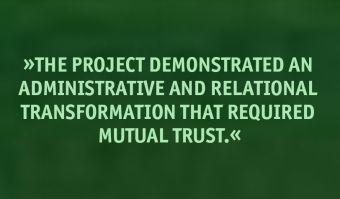
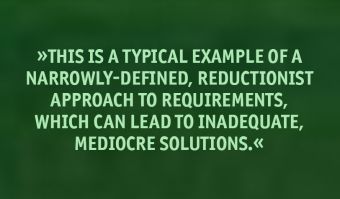
Urban planning: Transforming the notion of “smart cities” development
The original brief included a number of practical and functional requirements, and stated amongst other things that the bus station should: (a) be highly innovative, smart and sustainable; (b) promote a feeling of safety for passengers; and (c) involve citizens in its development. Most importantly, however, special emphasis was placed on the requirement to prevent heat loss from buses when opening their doors to (un)boarding passengers. This is a typical example of a narrowly-defined, reductionist approach to requirements, which can lead to inadequate, mediocre solutions. It was clear to the design researchers that a reframing of the project and requirements was necessary in order to approach the challenge as a ‚wicked problem‘ and come up with innovative interventions.
The first step in this reframing process was taken through a course at the Umeå Institute of Design. About 20 design students carried out design interventions in the city,
looking for meaningful experiences of public mobility. They involved passengers and bus drivers in designing and testing prototypes and mockups. At the same time, the team of designer-researchers found that an indoor bus station was not a viable option. The research showed that such a solution would not reduce carbon emissions, but rather it could lead to a potentially unsafe and difficult-to-maintain facility. The portfolio of design ideas from the students and the design research team pointed in another direction for reducing carbon emissions, namely increasing the willingness of people to use public transport more, by offering a pleasant traveling experience for passengers. Accordingly, the brief and the expectations of the municipality were transformed throughout the design process.
Being citizens: Transforming the Experience of Public Transport
Opened in October 2019—shortly before the pandemic hit—the Station of Being saw an increase of about 40% of passengers in the months following its opening compared to the previous year. Furthermore, the increase doubled compared to other nearby stations. A small pilot field study showed that people generally have positive feelings about the new station, and that the design scored highly with women in particular, due to the sense of safety it evokes (Åström, 2020). The Station of Being is now included in the Umeå Gendered Landscape (n.d.), and is deemed to have positively transformed the waiting experience.
Discourse and Awareness: Transforming learning
The final transformation we highlight here has to do with lifelong learning. The design research team initiated a participatory process aimed at empowering the relevant stakeholders, especially the municipal staff. Their active involvement in the design process increased their confidence in working beyond the beaten track. It reassured them in their leadership capacities and in their ability to participate in transformative processes. A clear example concerns the municipality’s snow ploughing service. Umeå is a town in northern Sweden that experiences heavy snowfall during several months of the year. The service was initially sceptical about how the design team might consider their needs. However, during the process they were able to regularly test how the bus station could be easily cleared of snow using machines, rather than the existing manual methods at traditional bus stops. The process increased their motivation, commitment and enthusiasm.
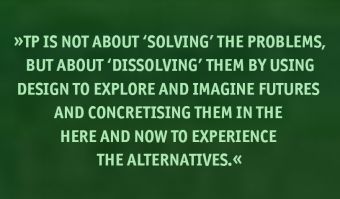
Design for Transforming Practices for a new European Renaissance
We are facing major societal challenges that call for multifaceted transformations, as illustrated by the example of Station of Being, including political, economical, social, technological, legal and environmental factors (also indicated as PESTLE) as well as demographic, ethical, ecological, intercultural, organisational and digitalisation factors (e.g. labeled as STEEPLED, DESTEP and SLEPIT) (Helmold & Samara, 2019). The escalation of tensions in our connected society—and the rebellion of the planet that has been exploited without any respect for its balance and the rights of all those inhabiting it—urgently demand new ways of working, fuelled by alternative value systems that are different from the status quo. These new ways of working together and inhabiting a planet in need of healing require transformations toward practices of mutual care, of repairing, experimenting, making and unmaking together. The Station of Being exemplifies some of these transformations.
The approach that we use in projects such as RUGGEDISED is known as Designing for Transforming Practices, in short TP (Hummels et al. 2019). It is an approach, or rather a quest to engage with the world in co-responsible ways, by transforming the status quo and developing new alternative practices (Hummels, 2021). TP catalyses liveable ecosystems by “transforming existing practices into truly sustainable ones, through design. It does it by initiating and curating multidimensional synergies, driven by beauty, diversity and meaning. The scope is to imagine and propose sustainable futures, which are those futures where all beings are respected and actions to heal the planet are taken, towards a horizon of collective thriving. Those futures are populated by people living purposeful lives, in beautiful living spaces” (Trotto et al. 2021).
This approach is founded on five principles: complexity, situatedness, aesthetics, co-response-ability and co-development. TP is not about ‘solving’ the problems, but about ‘dissolving’ them by using design to explore and imagine futures and concretising them in the here and now to experience the alternatives. TP stimulates critique, elicits dialogic debates that arise from tensions between the status quo and
alternatives, and finds new avenues for the flourishing of a new civilisation. Only from new practices can a new civilisation, and hence a new renaissance, arise (Trotto, 2011).
The process of the Station of Being underlines the ability and competence of designers to deal with ‘wicked’ problems, i.e. messy, complex problems which cannot be tamed or solved (Rittel & Webber, 1973). Designers have the attitude, skills as well as methods to deal with complexity and to tackle complex problems pragmatically. The quality of design and designers is that they can reframe and reconfigure challenges with the aim to dissolve them in the long run. With TP, we do not only aim at dissolving wicked problems, but we also focus on impacting future trajectories by changing attitudes and practices of involved parties, breaking boundaries between silos and addressing organisational aspects, as shown in the Station of Being.
Not only are they highly complex, but also our societal challenges carry a strong sense of urgency, asking for immediate actions. Hence we are bound to take actions

in the here and now while simultaneously generating a long-term outlook for both the future and history (100 years and more), thus connecting past, present and future. By working on several time scales at the same time, we prepare ourselves for serendipity, emerging outcomes and wicked impact. Above all, we do so by engaging with a broad spectrum of stakeholders to evoke co-response-ability.
With TP we want to contribute to a European Renaissance. In this new era, we are inspired and empowered to collaboratively explore processes and practices founded on care, trust and repairing. To be
able to contribute even better to a European Renaissance, we have recently made an exciting new step in our quest and established the Design Competence and Experience Centre, which “exists to catalyse ecosystems and transform existing practices into more sustainable ones, by initiating and curating multidimensional synergies, with beauty, diversity and meaning, for sustainable futures” (Trotto et al, 2021). It is an endeavour in which creativity can lead the ways (as opposed to “the way”) to unlock ourselves from old paradigms that lead to the depletion of the planet and of humankind. We invite you to join the quest for ushering in a European Renaissance.
REFERENCES
Åström, M. (2020). Innovations in Urban Planning: A study of an innovation project in Umeå municipality (Dissertation). Retrieved December 02, 2021, from http://urn.kb.se/resolve?urn=urn:nbn:se:umu:diva-171983Helmod, M. (2019). Tools in PM. In: M. Helmold and W. Samara (Eds). Progress in Performance Management: Industry Insights and Case Studies on Principles, Application Tools, and Practice, Springer. p 111-122. https://doi.org/10.1007/978-3-030-20534-8_8
Hummels, C. C. M., Trotto, A., Peeters, J. P. A., Levy, P., Alves Lino, J., & Klooster, S. (2019). Design research and innovation framework for transformative practices. In Strategy for change (pp. 52-76). Glasgow Caledonian University.
Hummels, C. (2021). Economy as a transforming practice: design theory and practice for redesigning our economies to support alternative futures. In: Kees Klomp and Shinta Oosterwaal (Eds). Thrive: fundamentals for a new economy. Amsterdam: Business Contact, 96-121.
Rittel, H. W., & Webber, M. M. (1973). Dilemmas in a general theory of planning. Policy sciences, 4(2), 155-169. https://doi.org/10.1007/BF01405730
Trotto, A., Hummels, C. C. M., Levy, P. D., Peeters, J. P. A., van der Veen, R., Yoo, D., Johansson, M., Johansson, M., Smith, M. L., & van der Zwan, S. (2021). Designing for Transforming Practices: Maps and Journeys. Internal publication. Technische Universiteit Eindhoven.
Umeå Gendered Landscape (n.d.). About the gendered landscape. Retrieved December 02, 2021, from https://genderedlandscape.umea.se/in-english/.
Ambra Trotto
Ambra is the Design and Research Director of the European Design Competence and Experience Center for inclusive innovation and socetial transformation and associate professor at the Umeå Institute of Design.She leads the Digital Ethics initiative at RISE, directing the strategic work regarding how RISE supports societal actors in taking ethics into account, when designing transformation with technology as a material. She is part of the RISE Development Team of the strategic research area Value-shaping System Design. She has initiated the environment of RISE in Umeå, leading The Pink Initiative, which is establishing, through design research, local, national and international multidisciplinary ecosystems, supporting business and society to thrive and create sustainable futures. Ambra has 16 years experience in writing and participating in various forms of European projects. Ambra Trotto’s fascinations lie in how to empower ethics, through design, using digital and non-digital technologies as materials. Strongly believing in the power of Design and Making, Ambra works with makers, builders, craftsmen, dancers and designers to shape societal transformation. Within her design research activity, she produces co-design methods to boost transdisciplinary design conversations. She closely collaborates with the Research group of Systemic Change and the Chair of Transforming Practices of the Department of Industrial Design at the Eindhoven University of Technology.
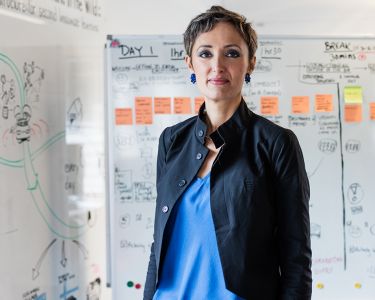
Jeroen Peeters
Jeroen is a Senior Design Researcher at the unit Societal Transformation, part of the department Prototyping Societies at RISE Research Institutes of Sweden. Within this capacity, he has contributed to a variety of national and international research and design projects with public and private sector actors. Since 2021, he is also a visiting researcher at the Systemic Change Group at the Department of Industrial Design at Eindhoven University of Technology. Jeroen´s research work focuses on how to design for engagement and the use of design methodologies to develop insights and knowledge of complex societal challenges. This work is centered around the design of proposals that make societal transformation experienceable with the aim of allowing stakeholders to feel and thereby understand what is necessary for a transformation to take place. Jeroen holds degrees in Industrial Design from Eindhoven University of Technology in the Netherlands (2012) and a PhD in Design Research from the department of Informatics at Umeå University in Sweden (2017).
Picture © Murat Erdemsel
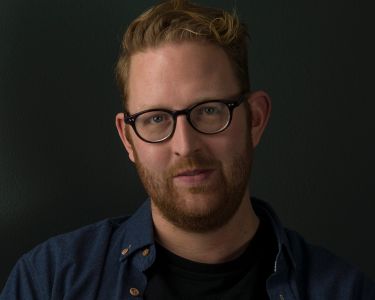
Caroline Hummels
Caroline Hummels is professor Design and Theory for Transformative Qualities at the department of Industrial Design at the Eindhoven University of Technology (TU/e). Her activities concentrate on designing for and researching transforming practices. She is linking nowadays challenges and complexities of quintuple helix partners, with probably, plausible, possible and preferable futures in the upcoming 5 – 100 years, through designing alternative ways to engage in complex socio-technical systems. She is thereby interweaving theory and practice, by developing with her team a design-philosophy correspondence, in which both disciplines mutually inform each other to address societal challenges.Caroline has always worked at the forefront of design research to develop the discipline, push its boundaries and address societal challenges. She is co-founder and steering committee member of the Tangible Embedded, and Embodied Interaction (TEI) Conference. She has been at the forefront building the Research through Design (RtD) field and community in the Netherlands. She is ambassador for co-creation and participation of the Key Enabling Methodologies (KEMs) for mission-driven innovation, advisory board member of the Dutch Design Foundation, associate editor of the Journal of Human technology Relations, and editorial board member of the International Journal of Design. Picture © Marike van Pagée
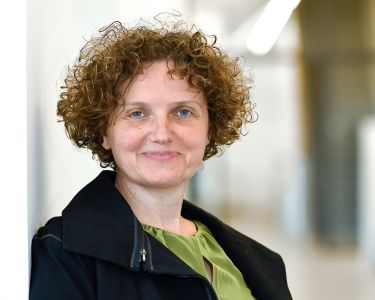
Pierre Lévy
Pierre Lévy is professor at the National Conservatory of Arts and Crafts (CNAM) in France, holder of the Chair of Design Jean Prouvé, and researcher at the Dicen-IDF lab. He is interested in the correspondence between reflection and design practices, pointing towards transforming practices and sciences. His research mainly focuses on embodiment theories and Japanese philosophy and culture in relation to designing for the everyday. Previous to his position at CNAM, he has been researcher at the University of Tsukuba and Chiba University in Japan, and assistant professor at Eindhoven University of Technology. He holds a Mechanical Engineering master’s degree (UT Compiègne, France), a doctoral degree in Kansei (affective) Science (University of Tsukuba, Japan), and a HDR in Information and Communication Sciences (UT Compiègne, France). He is also co-founder and former president of the European Kansei Group (EKG) and coordinator of the Kansei Engineering and Emotion Research (KEER) Steering Committee.
Picture © Nami Lévy
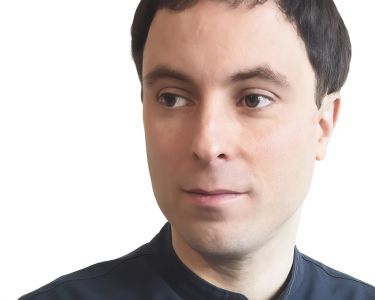
Daisy Yoo
Daisy Yoo, PhD, is an assistant professor at the Department of Industrial Design at the Eindhoven University of Technology in The Netherlands. Her primary research focus is on designing for public services and social sustainability. In her prior work she investigated issues of participation, inclusion/exclusion in politically contested design spaces – spanning from local issues concerning the co-design of public transportation service to global issues concerning the transitional justice for Rwanda in the aftermath of the 1994 genocide. Such work, entangled in the web of complex social dynamics, raises methodological and ethical challenges, calling for new design methods, toolkits, and theories. Prior to TU/e, she held the postdoctoral fellowship on participatory design at the Aarhus University in Denmark. She holds a PhD in Information Science and Human-Computer Interaction from the University of Washington, where she was advised by Batya Friedman of the Value Sensitive Design Lab. She received her Master’s in Interaction Design from Carnegie Mellon University, and her Bachelor of Science in Industrial Design from Korea Advanced Institute of Science and Technology (KAIST).
Picture © Vincent van den Hoogen
